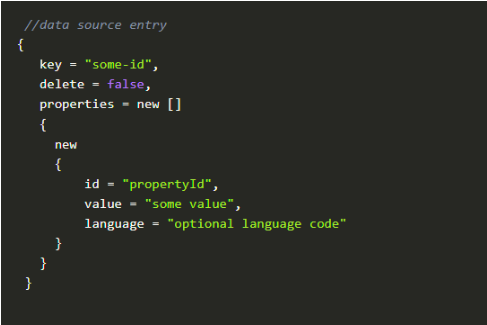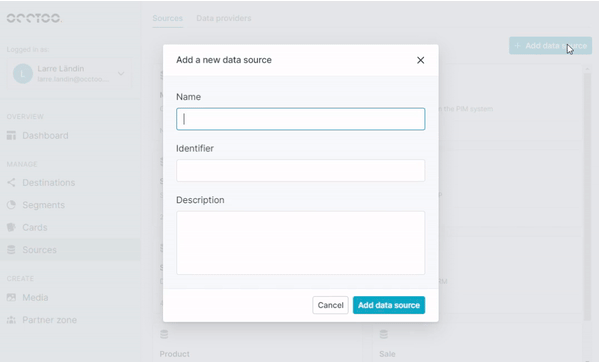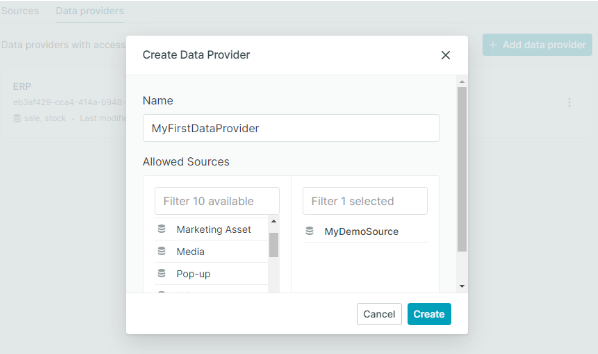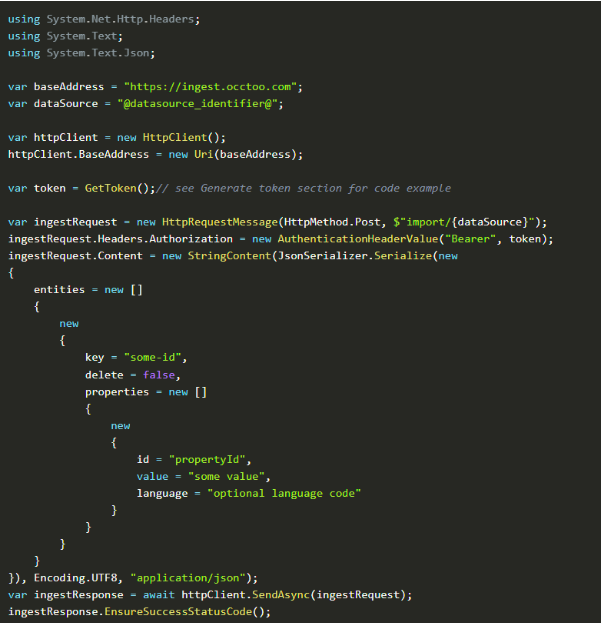One of the main benefits of Occtoo is that digital team members with no coding skills can always access and activate all data they need to build relevant digital experiences with help from our no-code studio.
How do you get started with Occtoo then? How do you actually get data into Occtoo? For seasoned digital professionals, it can seem like a massive, costly project to add data from underlying systems that are not built with an API-first approach (ERP, CRM, PIM, etc), but we can assure you, it is not! Adding data to Occtoo (meaning getting started) is easy and in this article we’ll explain how it’s done!
Now, before beginning ...
I want to clarify that it is not the easy on-boarding of data that makes the Occtoo Experience Data platform unique, on-boarding is just one component of Occtoo that enables you and your digital teams to reach the final goal of creating and developing amazing new digital experiences in no time.
However, to create these experiences we will need data to power them, the data needs to be fast and scalable, it needs to be connected and unified but mainly, it needs to be available.
No model
First, the data onboarded to Occtoo has no model or format that it needs to conform to. Otherwise, a common problem when building integrations from one system to another is that you must find the least common denominator between the systems, and then you can transfer only the data that fits this model. This leaves you with insufficient data for your experience and a point-to-point integration that will need to be monitored as systems are upgraded or changed.
With the Occtoo Experience Data Platform you can use and re-use the same data, in various combinations, over several different destinations and applications, with just one single and simple integration.
For further reading, check out 7 major benefits of adding an experience data platform to your tech stack
Occtoo Source Blok
The on-boarding of data is handled by the Occtoo Source blok. You can view the Source blok as a bucket that you just throw your data into by using a RESTful API, the Occtoo ingestion point.
You can add a single record or larger batches of data and as long as you add some kind of unique identifier to each record you are good to go. By labelling your different properties, Occtoo will automatically match these with labels that are alike. However, each record doesn’t have to have the same labels or properties even though this is often the case. In some cases, you might have properties that contain several values or references, just put a delimiter of your choice in there and continue, you can set up these delimiters in the Occtoo Card blok later on. By adding a language code to your property, you can support multiple languages as well. All this gives you great flexibility to ingest any data source you want!

Multi-domain data
Data can be fed into Occtoo from many different types of systems. One individual system can be the origin of several different sources. Say you hold stock levels, pricing, and resellers in your ERP; these could be fed into Occtoo as three separate “logical” sources ready to be combined and used in your various experiences.
Getting Occtoo ready to receive the data
Before starting your coding for on-boarding the data, you need to set up a data source through Occtoo Studio. This is all done through a simple form, and again, there is no need to set up any models or formats for the handling of the incoming data. Just add your name, identifier, and a nifty little description, and you are done.

Finally, to allow access to your data source, you need to register a simple data provider. It comes with a secret key and code examples to get you started in no time!

Now you can push any data to Occtoo, you can overwrite any existing records, and delete the ones that are no longer needed, all within one simple piece of integration.
Putting it all together
Now you have all the pieces needed to build your integration to Occtoo. With the data, provider comes code examples such as the one below.

No matter if the data is contained in a database, file structure, API, or similar. As long as you can get the data out, you can get it into Occtoo very easily.
Besides the ready-to-use code above, Occtoo also provides Nuget-packages with additional helpers as well as a large selection of generic and specific integration examples towards various sources. No matter how or what data you want to pull into Occtoo, it will be an easy task.
Once you have started, your digital teams can simply go to the Occtoo studio and pick and choose the assets they need when they are about to build their next digital experience.
View our full documentation or book a demo to talk to someone on our team.
